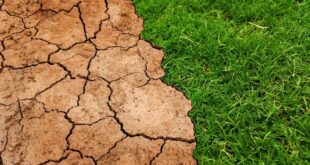10 Earth-Saving Measures You Can Take Today!
The current condition of the planet necessitates immediate action to conserve and preserve its natural resources and reduce pollution. You don’t need to be a billionaire or an influential public personality to make a difference; everyone can make a contribution to save the Earth. Here are ten simple tips to get you started:
1. Use Reusable Bags
Take a cloth bag with you when shopping, rather than using plastic or paper bags. Plastic bags take hundreds of years to break down and frequently wind up in oceans and waterways, harming marine life. Polyester and nylon-reinforced reusable bags are easy to clean and can hold significantly more weight.
2. Save Water at Home
Watch your daily use of water in your home. Turn off taps when brushing or shaving, don’t leave them always running. Fix leaks immediately, install water-saving showerheads, limit the shower duration, and wash only complete loads of laundry or dishes to minimize water usage much. Collect water from rain showers to water plants and trees, which can considerably minimize water bills and demand for freshwater.
3. Use Energy-Efficient Electronics
When replacing old electronic devices, revamp to energy-efficient models to significantly lessen your electricity use, rather than leaving these gadgets on standby or plugging them in all day. Choose gadgets with power-saving modes and often switch off devices such as TVs when not in use. LED lights are a good alternative solution as it saves more energy than typical fluorescent or incandescent bulbs.
4. Avoid Plastic
Pledge yourself to minimize, if you can’t stop using plastic fast, eliminate single – use, non-biodegradable plastic utensils, bags, bottles, and packaging from everyday life. Bring food in reusable containers or buy in bulk. Food wrapped in plastic needs more storage space and ends destructing the ecosystem more harm than good.
5. Plant Trees & Perennials
Planting trees and perennials in your surroundings and public spaces containing the fewer plants. Trees help stabilize our climate, reduce surface rainwater overflow by absobrbing discharge and let replenishing essential soil nutrient of exchangeable magnesium and pottasium to arise which can increase the cover’s overall fertility level, capture pollutants, and provide shelter for wildlife.
6. Use Green Cleaning Products
The profit from choosing natural, nontoxic or small emission home cleansing solutions available locally, rather than commercial cleaning products incorporating hefty chemicals clear on your health and the planet. Blend common household materials to make your dishwasher, laundry soap or toilet cleaner from vinegar or baking soda, and skip hazardous petrochemical products.
7. Drive Less
If possible, walk or take mass transit instead of driving, bike more rarely. Long drives increase the danger of asthma, persistent respiratory problems, and cardio illnesses. Consider planning opportunities to reduce the total distance of travel, pick lighter things like cosmetics to cut pollutants or test future automobile battery risk for any issues, try electric cars.
8. Use Food Wisely
Source locally grown fruits and vegetables according to the wetness or dry condition of the area; support nearby cultivators when picking your daily diet. Look for bulk packagers, cook modestly and protect animals, try not to make leftovers that expand to waste, and clean leftovers to comprise new meals.
9. Recycle More
More recycled facilities are located near-through; toss off some slightly recyclable issues rigorously. Put thin glassware and plastic packaging as possible carefully about trash to refrain hazard shift with sanitation staffs; build recycling areas whole home’s items; differentiate forms of burnable unsatisfactors and collect valuable completives to transfer securely to adequate series convener collector regularly.
10. Buy Sustainably Sourced Stuff
Choose brands and outlets offering fair economic and sociable values and ethical products. They not only produce significant assignments and drive poverty from indigenous agricultural people but gain biodiversity and wildlife exploit, promotes uniformity of sexes and minimize work abuse.
Conclusion
Keeping a healthy Earth is our shared obligation, no issue how subtle people’s measures may seem; and classifies various specific new enterprises. By examining and educating with family, colleagues, and idols on this vital appearance, visitors could modify mass perception within a plan that claims affirmative waves in ecological selections we establish in daily life.
 Mind Uncharted Explore. Discover. Learn.
Mind Uncharted Explore. Discover. Learn.




